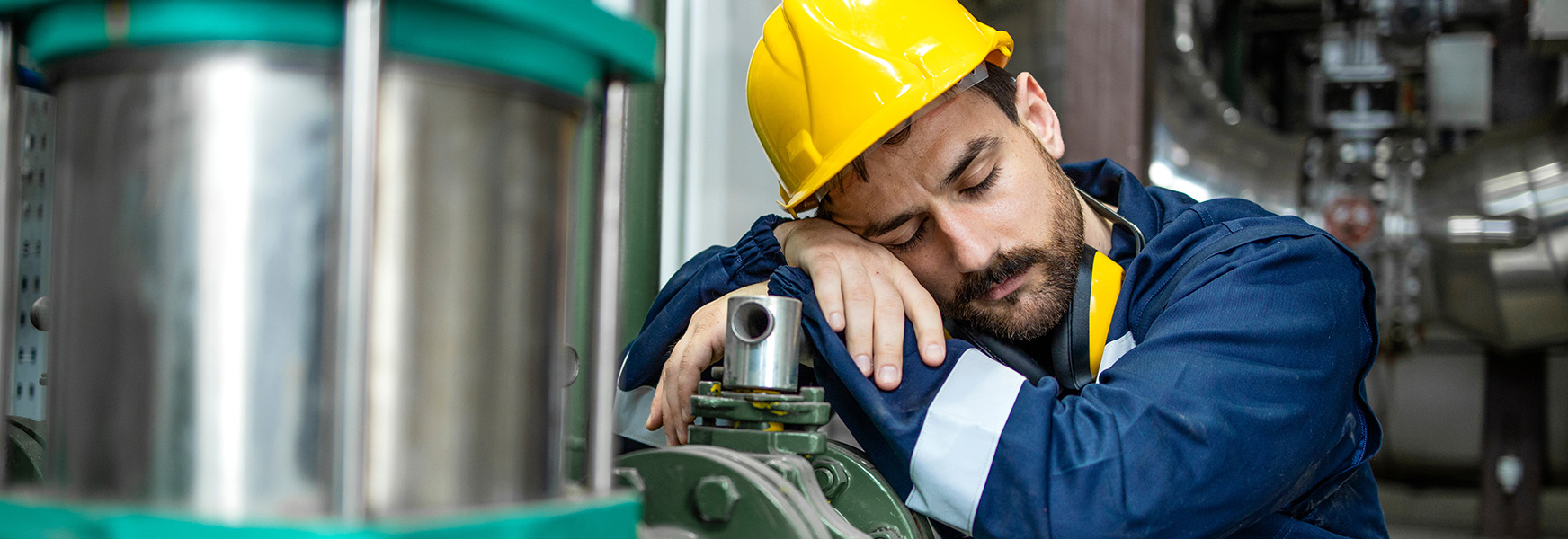Don’t Sleep on the Risks of Fatigue at Your Workplace

This is the first blog in a series examining factors that affect workers' mental acuity and influence workplace safety. Topics include fatigue, distractions, stress, and harassment.
With numerous other, often more obvious hazards, fatigue can be overlooked as a serious safety concern. However, it can play a significant role in workplace incidents, injuries, and long-term health issues. Whether due to long shifts, irregular hours, or chronic sleep deprivation, fatigue can impair judgment, slow reaction times, and reduce overall performance, making it a silent threat to workplace safety.
According to the Occupational Safety and Health Administration’s (OSHA) fatigue resource page, compared to day shifts there is an 18% increase in incident and injury rates during evening shifts and a 30% increase during night shifts. Fatigue is even cited as a contributing factor in several industrial disasters including the 2005 Texas City BP oil refinery explosion, the 2009 Colgan Air Crash, the explosion of the space shuttle Challenger, and the nuclear accidents at Chernobyl and Three Mile Island.
What is fatigue?
Fatigue is a feeling of tiredness, lack of energy, or exhaustion. It can result from prolonged work hours, insufficient rest, or disrupted sleep patterns. According to the National Safety Council (NSC), over 43% of workers report being sleep-deprived, with those working night, long, or irregular shifts being most at risk.
How much sleep do adults really get?
The National Sleep Foundation recommends that adults get 7 to 9 hours of sleep per night for optimal health and functioning [3]. However, the average American adult sleeps only about 6.5 hours on weekdays, falling short of the minimum recommendation. This chronic sleep debt accumulates over time, leading to increased fatigue and decreased cognitive performance.
Shift work and circadian disruption
Shift workers, especially those on rotating or night shifts, are particularly vulnerable to fatigue. Their work schedules often conflict with the body’s natural circadian rhythm, leading to chronic sleep deprivation and increased health risks. Research from Harvard Medical School links shift work to higher rates of heart disease, diabetes, and even certain cancers.
Fatigue vs. other forms of impairment
One of the most alarming findings in fatigue research is how closely its effects mirror those of alcohol impairment. The NSC reports that:
- Losing just two hours of sleep can impair performance as much as three alcoholic drinks.
- Being awake for more than 20 hours is equivalent to having a blood alcohol concentration (BAC) of 0.08%, the legal limit for driving.
This comparison underscores the severity of fatigue-related impairment. While most workplaces have strict policies against alcohol and drug use, fatigue often goes unaddressed, even though its effects can be just as dangerous. The disconnect between our perception of the impairment fatigue may cause and its actual impact can contribute to widespread sleep deprivation and its associated risks.
What employers can do to mitigate fatigue-related risks, employers should consider:
- Educating employees about the importance of sleep
- Designing schedules that allow for adequate rest
- Encouraging regular breaks during long shifts
- Monitoring for signs of fatigue and providing support
Fatigue is one of many daily stressors that an employee may be combating. By recognizing its impact and taking proactive steps, employers can protect their workforce, reduce injuries, and improve general workforce wellbeing.
Related MEMIC Blogs:

